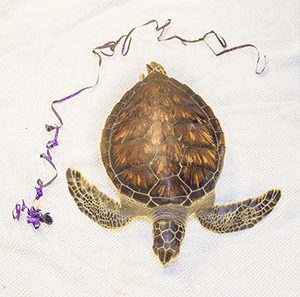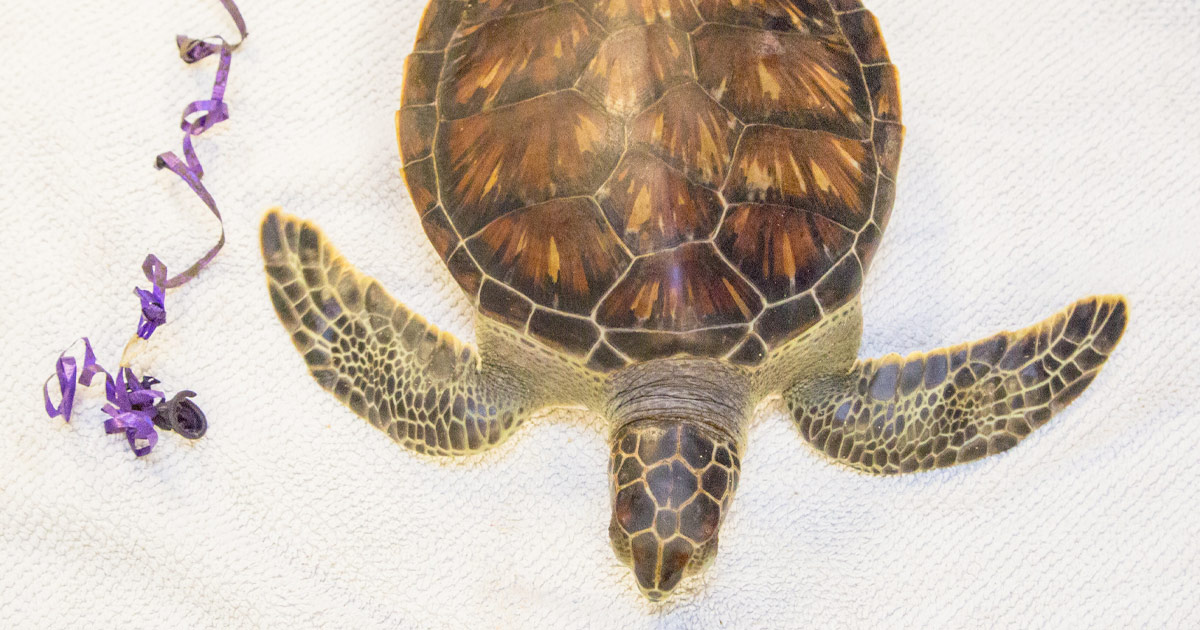
Jellyfish, plastic bags, balloons; these all look like food to a hungry sea turtle. But plastics and trash don’t belong inside a sea turtle or in the ocean at all. They can lead to a number of environmental problems. They are especially dangerous for marine animals that can become entangled or accidentally ingest these items while feeding. Once ingested, the plastic items can cause a variety of issues. Digestive tracts can become blocked, which can lead to starvation and death. Over 100 million marine animals die each year due to marine debris, according to the Sea Turtle Conservancy. And more than half of the world’s sea turtles have ingested some plastic or human trash, according to a University of Queensland study.
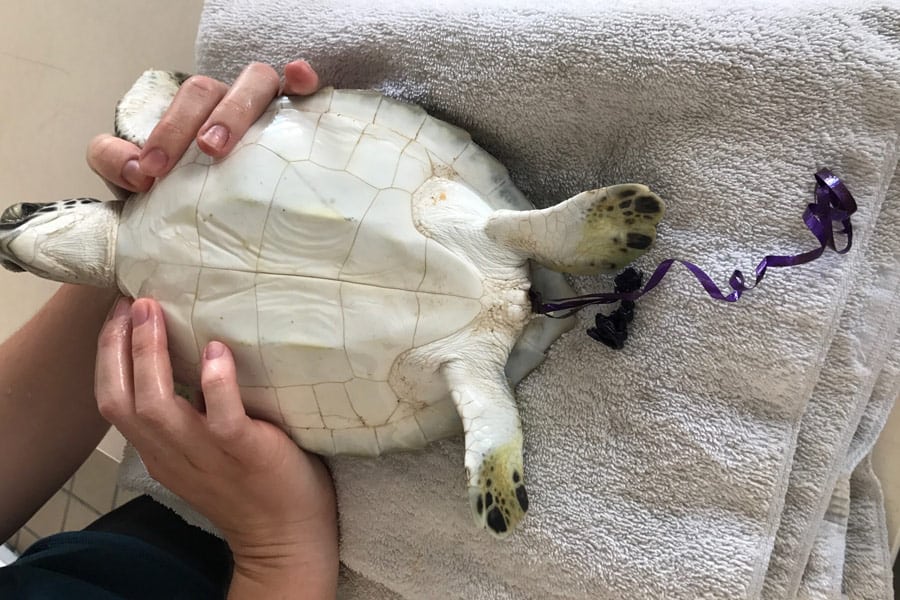
Direct Impact on Endangered Sea Turtles
Chex is a recently rescued juvenile green sea turtle, an endangered species. This sea turtle was found floating and struggling to dive. Soon after it was brought to Clearwater Marine Aquarium for rehabilitation, it was discovered that it had ingested a balloon with string attached. The remains of the balloon had passed through its gastrointestinal tract.
Sea turtle buoyancy disorders, commonly referred to as “bubble butts,” are a growing issue. This condition is often caused by trapped gas inside the turtle’s digestive system. The harmful decomposition of marine debris is believed to be the cause of many of these cases. Sea turtles that cannot properly submerge will have trouble feeding and become more vulnerable to boat strikes, predation and entanglements.
This is an important reminder to not participate in balloon releases. Remember that even when far from the sea, balloons and other plastic trash may end up in waterways eventually harming marine life and affecting entire food chains that come back to impact our own lives. The problem with plastics in the ocean does not end with the individual pieces of trash or the animals that are affected. But we can start making a difference by saving these animals and cutting down the causes that lead to a larger ocean pollution crisis.
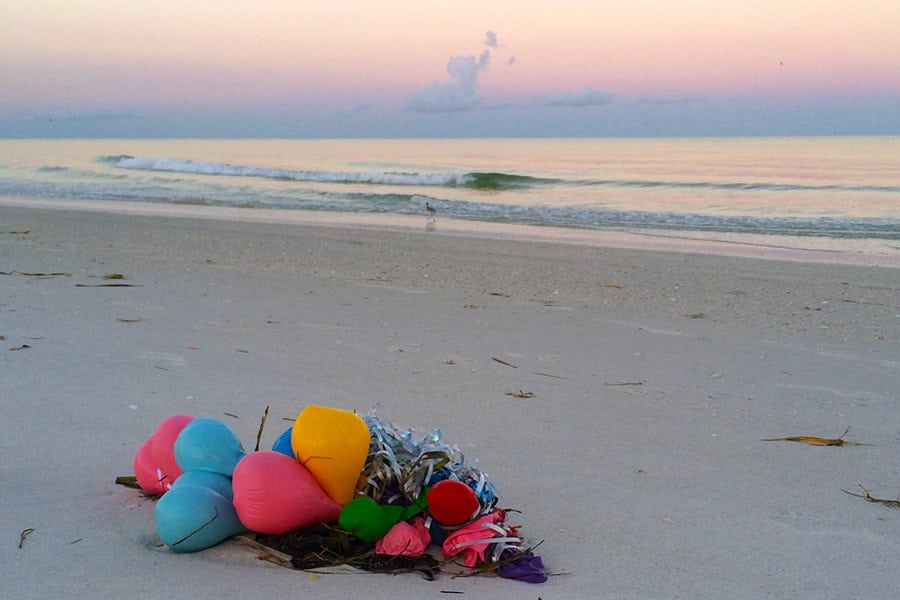
Plastics in the Ocean Are a Problem From Land
Eighty percent of plastic debris comes from land, according to the Sea Turtle Conservancy. It gets picked up by wind or washes out to sea from our beaches, streets and highways. Plastic debris includes plastic bags, balloons, bottles, straws, packaging and other material as well as displaced fishing gear. There are currently over 100 million tons of plastic estimated in the world’s oceans. According to a recent study published in the journal Science, approximately 4 to 12 million metric tons of plastic end up in the ocean each year.
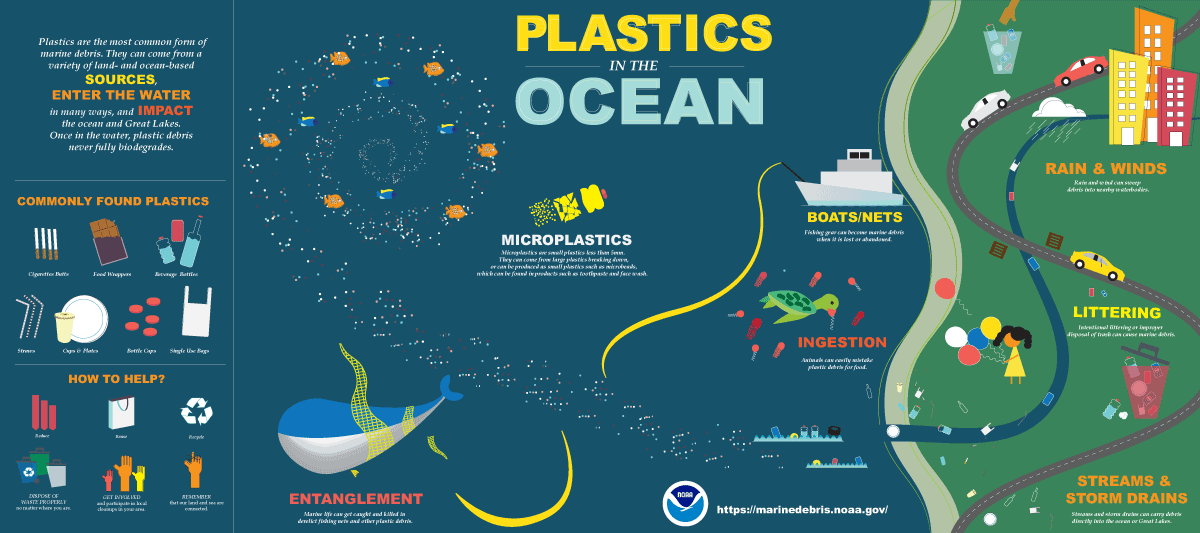
It takes 450 years for a plastic bottle to break down and at least 10 to 20 years for a single-use plastic bag, according to U.S. National Park Services. When plastics break down in the ocean, most of them never entirely disappear but instead slowly degrade into smaller and smaller pieces. These bite-size “microplastics” become more likely to spread and be eaten by fish and other marine animals, big and small, across food chains and ecosystems.
How You Can Help Make a Difference
At CMA we have 3 Rs: Rescue, Rehab and Release; but there are also 5 R’s to remember for conservation: Refuse, Reduce, Reuse, Repurpose, and Recycle.
- Avoid using disposable plastics whenever possible.
- Don’t use personal-care products containing “microbeads.”
- Never litter, and always make sure trash is properly disposed.
- Pick up any plastic bottles or trash you find.
- Get involved in and organize beach cleanups.
- Use reusable groceries bags and other reusable items.
- Carry a reusable to-go beverage container instead of disposable cups or water bottles.
- Try reusable metal or glass straw alternatives.
- Recycle as much as possible.
Learn what we’re doing to tackle marine debris through our Healthy Habitats and Oceans program.
Learn more specific ways you can help keep our oceans free of marine debris at marinedebris.noaa.gov.
